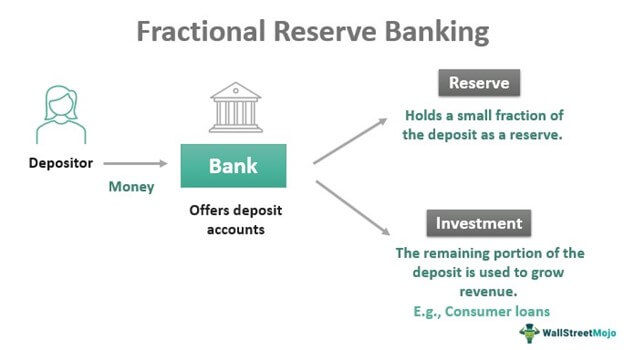After the failure of Silicon Valley Bank (SVB), a great deal of Americans are starting to realize the dangers of fractional-reserve banking. Reports show that SVB suffered a significant bank run after customers attempted to withdraw $42 billion from the bank on Thursday. The following is a look at what fractional-reserve banking is and why the practice can lead to economic instability.
For decades, people have warned about the dangers of fractional-reserve banking, and the recent ordeal of Silicon Valley Bank (SVB) has brought renewed attention to the issue. Essentially, fractional-reserve banking is a system of bank management that only holds a fraction of bank deposits, with the remaining funds invested or loaned out to borrowers. Fractional-reserve banking (FRB) operates in nearly every country worldwide, and in the U.S., it became widely prominent during the 19th century. Prior to this time, banks operated with full reserves, meaning they held 100% of their depositors’ funds in reserve.
However, there is considerable debate on whether fractional lending occurs these days, with some assuming that invested funds and loans are simply printed out of thin air. The argument stems from a Bank of England paper called “Money Creation in the Modern Economy.” It is often used to dispel myths associated with modern banking. Economist Robert Murphy discusses these alleged myths in chapter 12 of his book, “Understanding Money Mechanics.”

A primer on the mechanics of fractional reserve banking written by the economist Robert Murphy can be read here.
The FRB practice spread significantly after the passage of the National Banking Act in 1863, which created America’s banking charter system. In the early 1900s, the fractional-reserve method started to show cracks with the occasional bank failures and financial crises. These became more prominent after World War I, and bank runs, highlighted in the popular movie “It’s a Wonderful Life,” became commonplace at the time. To fix the situation, a cabal of bankers dubbed “The Money Trust” or “House of Morgan” worked with U.S. bureaucrats to create the Federal Reserve System.
After further troubles with fractional reserves, the Great Depression set in, and U.S. President Franklin D. Roosevelt initiated the Banking Act of 1933 to restore trust in the system. The Federal Deposit Insurance Corporation (FDIC) was also created, which provides insurance for depositors holding $250,000 or less in a banking institution. Since then, the practice of fractional-reserve banking continued to grow in popularity in the U.S. throughout the 20th century and remains the dominant form of banking today. Despite its popularity and widespread use, fractional-reserve banking still poses a significant threat to the economy.
The problems with SVB have shown that people have a lot to learn about these issues and about fractional banking as a whole. Currently, some Americans are calling on the Fed to bail out Silicon Valley Bank, hoping the federal government will step in to assist. However, even if the Fed saves the day regarding SVB, the dangers of fractional reserve banking still exist, and many are using the SVB failure as an example of why one should not trust the banking system operating in this manner.
免责声明:本文章仅代表作者个人观点,不代表本平台的立场和观点。本文章仅供信息分享,不构成对任何人的任何投资建议。用户与作者之间的任何争议,与本平台无关。如网页中刊载的文章或图片涉及侵权,请提供相关的权利证明和身份证明发送邮件到support@aicoin.com,本平台相关工作人员将会进行核查。




